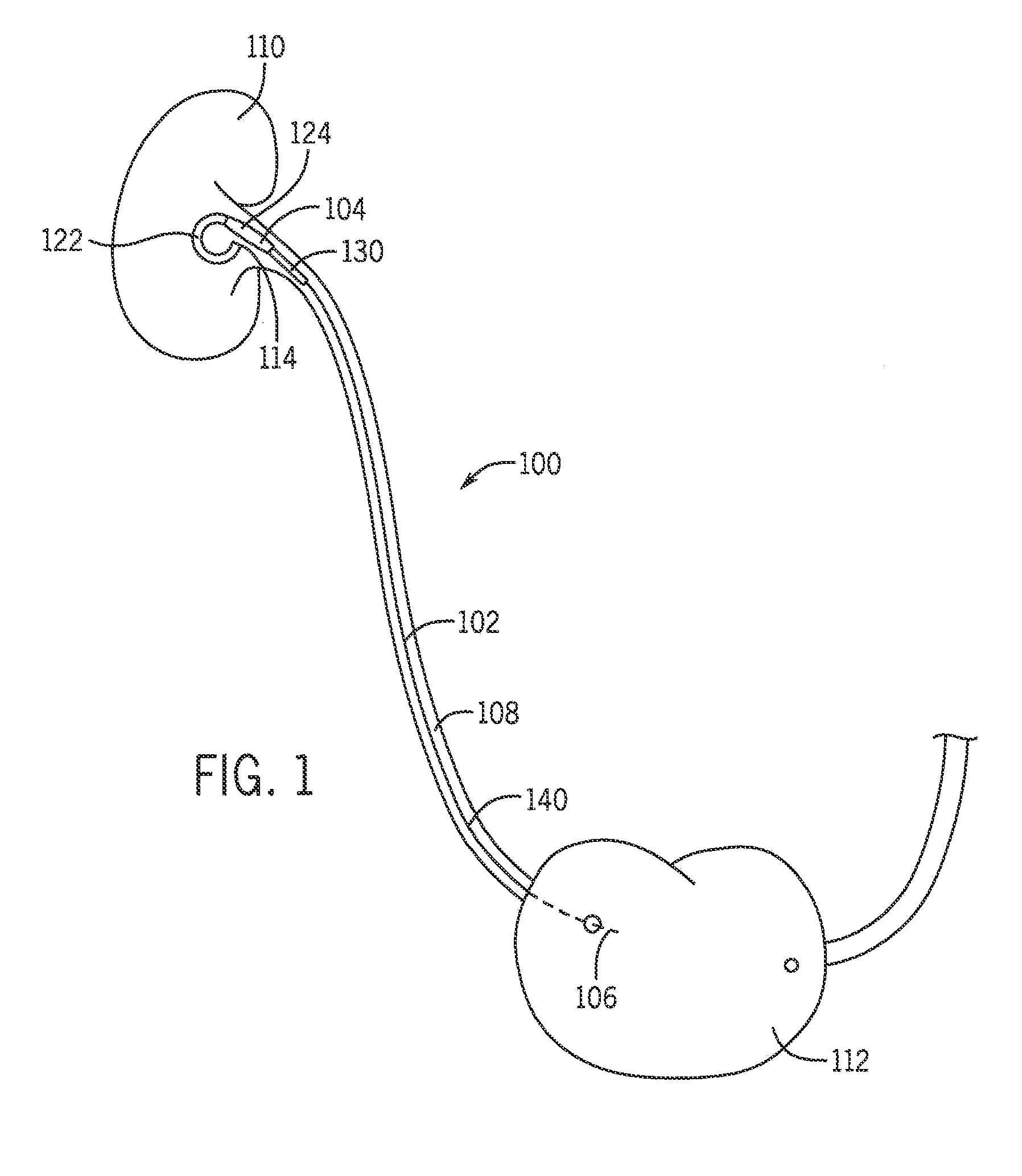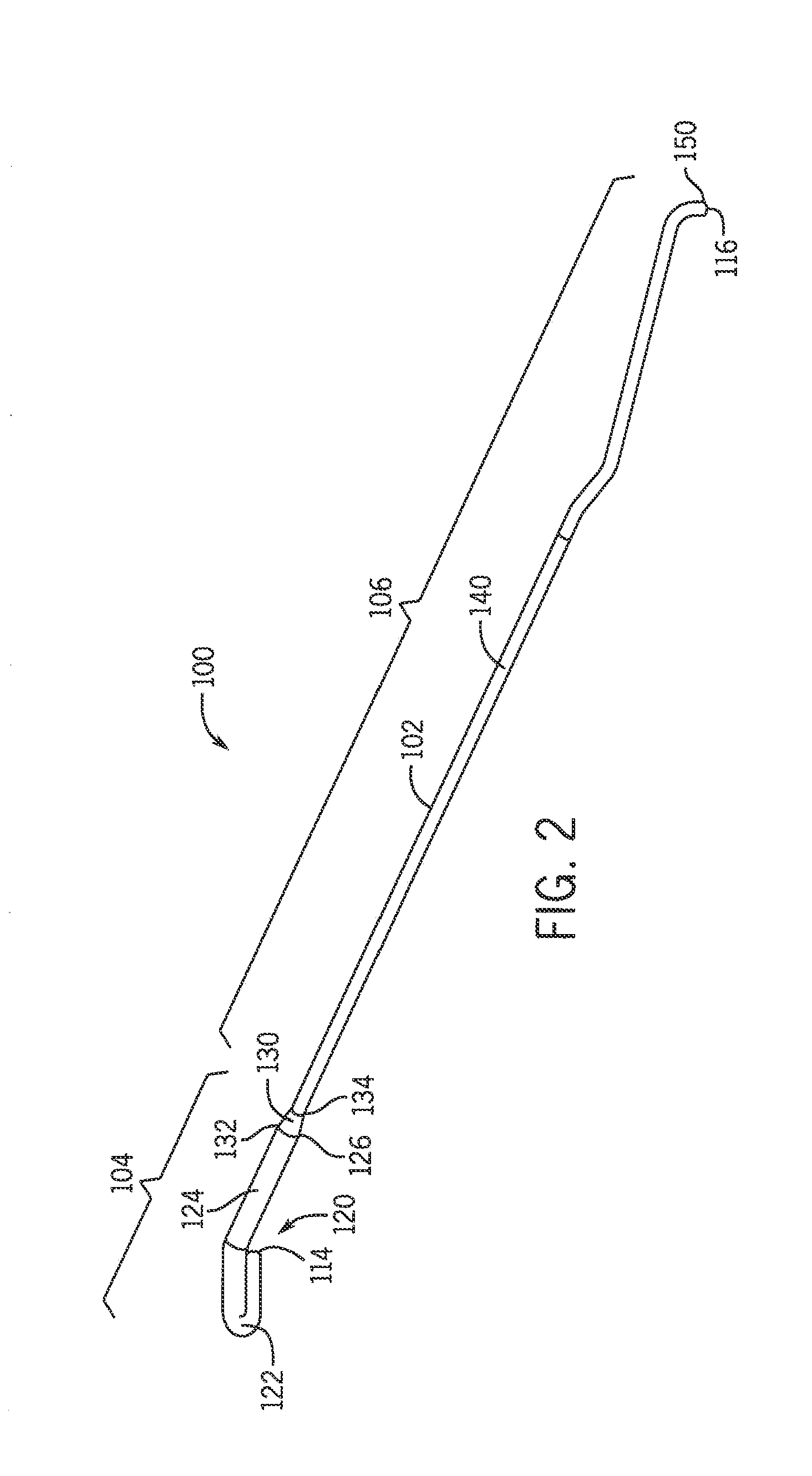System and method for use of flexible Anti-reflux ureteral stent
a ureteral stent and flexible technology, applied in the field of stent systems and methods, can solve the problems of patients suffering from bleeding, numerous side effects of existing ureteral stents, and various other undesirable side effects, and achieve the effects of reducing patient irritation, preventing migration, and enhancing patient comfor
- Summary
- Abstract
- Description
- Claims
- Application Information
AI Technical Summary
Benefits of technology
Problems solved by technology
Method used
Image
Examples
Embodiment Construction
[0027]As best seen generally in FIGS. 1-14, a stent 100 includes an elongate conduit 102 having a renal portion 104 and a bladder portion 106. The elongate conduit 102 defines at least one lumen, which allows fluid communication therethrough. The stent 100 is designed to be placed or otherwise positioned in a passageway of a patient (e.g., urinary tract), and in particular, into a patient's ureter 108. The renal portion 104 of the stent 100 is designed to be positioned proximate the patient's kidney 110 and the bladder portion 106 is designed to be positioned proximate the patient's bladder 112. The stent 100 provides a passageway from the kidney 110 to the bladder 112 through the ureter 108 to allow urine to flow unimpeded and exit from the patient through the urethra (not shown).
[0028]In one embodiment, the stent 100 is defined by at least two separate materials having a different hardness parameter as discussed herein. In a different embodiment, the stent 100 is defined by the sa...
PUM
 Login to View More
Login to View More Abstract
Description
Claims
Application Information
 Login to View More
Login to View More - R&D
- Intellectual Property
- Life Sciences
- Materials
- Tech Scout
- Unparalleled Data Quality
- Higher Quality Content
- 60% Fewer Hallucinations
Browse by: Latest US Patents, China's latest patents, Technical Efficacy Thesaurus, Application Domain, Technology Topic, Popular Technical Reports.
© 2025 PatSnap. All rights reserved.Legal|Privacy policy|Modern Slavery Act Transparency Statement|Sitemap|About US| Contact US: help@patsnap.com



